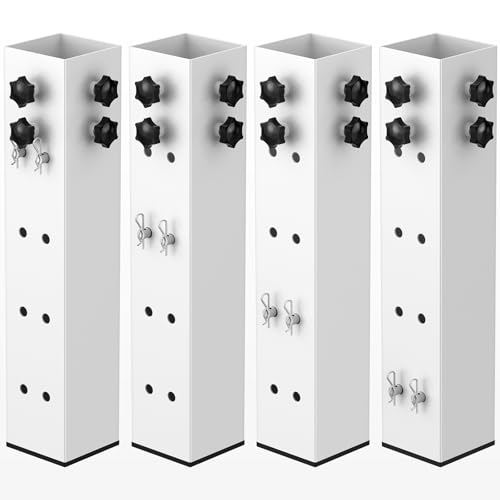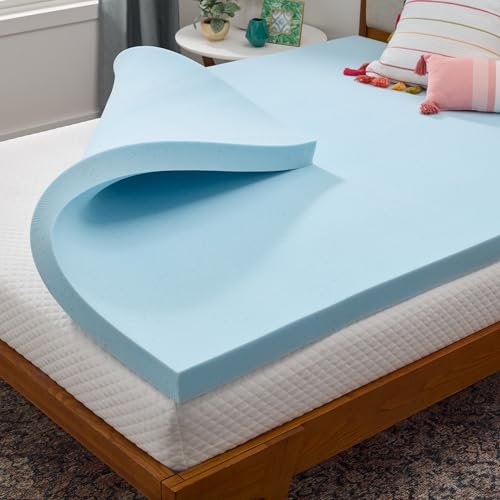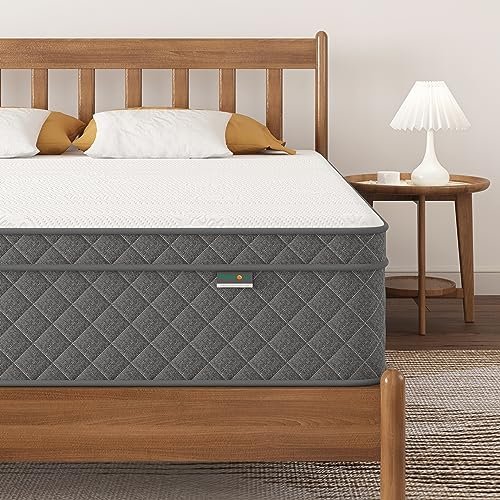
Elevate Your Comfort: A Step-by-Step Guide on How to Make a Bed Frame Taller
Ever wished your bed was just a little bit higher? Perhaps you dream of extra under-bed storage, or maybe you find it more comfortable to get in and out of a taller bed. Whatever your reason, making your bed frame taller is a surprisingly achievable DIY project that can significantly improve both the aesthetics and functionality of your bedroom.
This detailed guide will walk you through various methods, from simple additions to more involved custom solutions, ensuring you can find the perfect approach for your needs. We’ll also share essential tips and common mistakes to avoid, guaranteeing a safe, stable, and stylish outcome.
Why Make Your Bed Taller? The Benefits Are Clear!
Before we dive into the “how,” let’s quickly reiterate why a taller bed might be exactly what you need:
- Increased Under-Bed Storage: This is often the primary motivator! A higher bed allows for larger storage containers, helping you declutter and maximize space, especially in smaller rooms.
- Improved Accessibility and Comfort: For individuals with mobility challenges or those who simply prefer a higher sleeping surface, a taller bed can make getting in and out much easier and more comfortable.
- Enhanced Aesthetics: A higher bed can create a more luxurious and grand feel in your bedroom, making the space appear larger and more sophisticated. It can also help balance out high ceilings or large furniture pieces.
- Better Air Circulation: Elevating your bed can improve airflow underneath, which can be beneficial for mattress longevity and overall room ventilation.
Before You Begin: Important Considerations
Before you start any project, a little preparation goes a long way. Safety and stability are paramount when altering your bed frame’s height.
-
Measure, Measure, Measure!
- Current Height: Measure from the floor to the top of your mattress.
- Desired Height: How much taller do you want your bed to be? Keep in mind that a comfortable sitting height typically has your feet flat on the floor when you sit on the edge of the bed.
- Leg Dimensions: If you plan to add extensions, accurately measure the width and depth of your existing bed frame legs.
- Space: Ensure you still have adequate space to move around the bed once it’s taller.
-
Assess Your Bed Frame Type:
- Metal Frames: Often have thinner, hollow legs or wheeled supports.
- Wooden Frames: Usually have solid, thicker legs.
- Platform Beds: May not have traditional legs, requiring a different approach.
- Weight Capacity: Always check the manufacturer’s recommendations for your bed frame’s weight limit. Adding height can sometimes impact this, especially with certain methods.
-
Consider Your Flooring:
- Carpet, hardwood, or tile? Some methods might be more stable on certain surfaces. Non-slip pads are often a good idea.
Method 1: Bed Risers (The Easiest & Most Common Approach)
Bed risers are perhaps the simplest and most widely used solution for adding height. These are sturdy blocks, often made of durable materials, designed to fit under each leg of your bed frame.
Pros:
* Easy to Install: Minimal tools or DIY skills required.
* Affordable: Generally the most budget-friendly option.
* Removable: Can be taken off if you change your mind.
* Variety of Heights: Available in various increments.
Cons:
* Can sometimes look less integrated or clunky.
* Poorly chosen risers can compromise stability if not selected carefully.
Step-by-Step Instructions:
- Gather Your Materials: You’ll need a set of bed risers (typically four or six, depending on your frame’s leg count), a friend to help, and possibly some furniture sliders or a pry bar.
- Clear the Bed: Remove your mattress, box spring (if applicable), and all bedding. This makes the frame much lighter and easier to lift.
- Lift and Place (One Corner at a Time):
- With the help of a friend, carefully lift one corner of your bed frame.
- Center the bed leg securely into the top indentation of a riser. Ensure it sits firmly and squarely.
- Gently lower the leg onto the riser.
- Repeat for All Legs: Move around the bed, lifting each corner and placing a riser under each leg. Work slowly and methodically to maintain balance.
- Check for Stability: Once all risers are in place, gently push and pull on the bed frame to test its stability. It should feel solid and not wobble. If it wobbles, recheck each leg’s placement.
- Replace Bedding: Carefully place your box spring and mattress back onto the elevated frame.
Tips for Using Bed Risers:
- Choose High-Quality Risers: Invest in sturdy, durable risers that have a good weight capacity.
- Ensure a Snug Fit: The indentation on top of the riser should hold your bed leg firmly. Avoid risers that are too large or too small for your legs, as this can lead to instability.
- Consider Non-Slip Features: Some risers come with rubberized bottoms to prevent slipping, especially on hard floors. You can also add non-slip pads if needed.
- Match the Aesthetic (If Possible): While not always perfect, some risers come in different colors or styles that might blend better with your existing decor.
Method 2: DIY Wood Blocks/Leg Extensions (For a Custom, Integrated Look)
If you’re comfortable with basic woodworking, creating custom wood blocks or leg extensions can offer a more integrated and aesthetically pleasing solution. This method is ideal for wooden bed frames.
Pros:
* Custom Height: You can achieve precisely the height you desire.
* Integrated Look: When done well, the extensions can blend seamlessly with your existing frame.
* Very Stable: If properly constructed and attached, this method can be extremely sturdy.
Cons:
* Requires woodworking tools and basic skills.
* More time-consuming than risers.
* Less easily reversible.
Materials You’ll Need:
* Sturdy hardwood (e.g., oak, maple, poplar) matching the dimension of your existing legs.
* Wood glue (strong, durable type).
* Wood screws or carriage bolts with washers and nuts (depending on leg thickness and design).
* Drill and drill bits.
* Saw (miter saw for accurate cuts).
* Sander and sandpaper.
* Measuring tape, pencil, clamps.
* Wood stain or paint to match your bed frame (optional).
Step-by-Step Instructions:
- Measure and Cut Your Blocks:
- Measure the exact dimensions of your existing bed frame legs (width and depth).
- Determine how much height you want to add.
- Cut four (or six) pieces of hardwood to your desired height and the exact dimensions of your existing legs. Precision is key here for a seamless look and stability.
- Prepare the Connecting Surfaces:
- Sand both the top surface of your new blocks and the bottom surface of your existing bed legs to ensure good adhesion for the glue.
- Pre-Drill Pilot Holes:
- This is crucial to prevent wood splitting and to ensure straight screw/bolt insertion.
- Depending on your leg design, you’ll either drill pilot holes for screws coming up from the block into the leg, or for bolts going straight through both pieces.
- For screws: Drill pilot holes through the top of your extension block, slightly offset from the center, so they will go into the solid part of the bed leg.
- For bolts: Drill holes that will align perfectly from the bottom of the extension block, through the block, and into the existing bed leg.
- Attach the Blocks:
- Apply a generous amount of strong wood glue to the top surface of one of your cut blocks.
- Carefully position the block directly under one of your bed legs, ensuring it’s perfectly aligned.
- Secure the block:
- For screws: Drive appropriate-length wood screws up through the block and into the existing bed leg. Use at least two, preferably four, screws per leg for maximum strength.
- For bolts: Insert the carriage bolts up through the block and leg. Add a washer and nut, then tighten securely.
- Use clamps to hold the glued pieces together while the glue dries, if possible.
- Repeat for All Legs: Work on one leg at a time, ensuring each extension is securely attached before moving to the next.
- Sand and Finish (Optional but Recommended):
- Once the glue is completely dry and all extensions are secure, sand the new blocks smooth. Pay attention to any rough edges or seams.
- Stain or paint the new blocks to match your existing bed frame for a truly integrated and professional look.
- Reassemble and Test: Carefully place your bed frame back in position. Replace the box spring and mattress. Gently test the bed’s stability by pushing and pulling on it.
Safety Notes for DIY Wood Blocks:
* Use the Right Wood: Hardwood is stronger and more durable than softwood for this purpose.
* Strong Joinery: Do not rely on glue alone. Screws or bolts are essential for structural integrity.
* Accurate Cuts: Uneven cuts will lead to a wobbly bed.
* Consider Dowel Pins: For even greater strength and alignment, you can drill holes and insert wooden dowel pins between the original leg and the extension block, in addition to glue and screws/bolts.
Method 3: Building a Platform Base (A More Ambitious Project)
This method isn’t about raising the existing legs, but rather building a new, taller foundation for your entire bed. This is a significant project often chosen when you want a completely new look, maximum storage, or when your current bed frame isn’t suitable for leg extensions or risers (e.g., a platform bed without traditional legs).
Pros:
* Ultimate Customization: Design it exactly to your specifications.
* Exceptional Stability: When built correctly, a platform base is very sturdy.
* Integrated Storage Solutions: Can include drawers, shelves, or hidden compartments.
Cons:
* Requires significant woodworking skills and tools.
* More time-consuming and potentially more expensive.
* Not easily reversible.
General Concept:
You would essentially construct a sturdy, box-like wooden frame that sits on the floor. Your existing bed frame or just your mattress and box spring would then sit on top of this new platform. This platform can be designed to be solid, hollow for storage, or have built-in drawers.
Safety Notes for Platform Bases:
* Structural Integrity: This requires careful planning of internal supports to bear the weight of the mattress, occupants, and any stored items.
* Detailed Plans: It’s highly recommended to work from detailed blueprints or seek professional advice if you’re not an experienced woodworker.
* High-Quality Materials: Use strong, furniture-grade lumber and robust fasteners.
Other Ideas & Quick Wins (That Don’t Change the Frame)
While these don’t technically make the frame taller, they can achieve a higher sleeping surface:
- Thicker Mattress or Mattress Topper: The simplest solution! A new, deeper mattress or a plush mattress topper can add several inches to your sleeping height.
- Taller Box Spring or Foundation: If you currently have a standard 9-inch box spring, switching to a high-profile 12-inch version, or even adding a bunkie board on top of your existing box spring, can add noticeable height.
Common Mistakes to Avoid
- Ignoring Stability: This is the most crucial point. A wobbly bed is a dangerous bed. Always prioritize a rock-solid foundation.
- Overlooking Weight Capacity: Risers and DIY extensions have limits. Don’t overload them.
- Uneven Elevation: If your legs aren’t all raised to the exact same height, your bed will be uneven and uncomfortable. Use a level to check!
- Using Flimsy Materials: Cheap plastic risers or weak wood for DIY extensions can fail under pressure. Invest in quality.
- Forgetting Aesthetics: While functionality is key, also consider how the new height and any added components will look in your room.
- Not Measuring Properly: Rushing this step leads to ill-fitting risers, crooked cuts, and a host of other problems.
- Skipping Pre-Drilling: Especially with wood, drilling pilot holes prevents splitting and ensures screws/bolts go in straight and strong.
Final Tips for Success
- Get Help: Many of these tasks are easier and safer with an extra set of hands.
- Take Your Time: Don’t rush the process. A meticulous approach yields better, safer results.
- Test Thoroughly: After any modification, always test the bed’s stability before you sleep on it.
- Consider Your Needs: Think about how you use your bed. Do you sit on the edge often? Do you need clearance for a robot vacuum?
Transforming your bed frame’s height can truly transform your bedroom. By following these detailed instructions and heeding the safety advice, you’ll soon be enjoying a taller, more functional, and more comfortable sleeping space!
Frequently Asked Questions(FAQ)
Q. Why would I want to make my bed frame taller?
A. People often choose to make their bed frames taller for several reasons, including increased under-bed storage space, easier access for individuals with mobility issues who find it difficult to get in and out of a low bed, or simply for aesthetic preferences to achieve a more grand and imposing look in the bedroom. A taller bed can also make a room feel more open and allow for better air circulation.
Q. What are the most common methods to increase bed frame height?
A. The most common methods include using bed risers, replacing or extending the existing bed legs, adding a taller foundation or box spring, or building a custom platform base for the frame to sit on. Each method varies in cost, effort, and permanency.
Q. How do bed risers work, and are they a good option?
A. Bed risers are sturdy blocks, often made of plastic, wood, or metal, that the existing bed legs sit into or on top of. They are generally considered a quick, affordable, and non-permanent solution for adding a few inches to your bed’s height. They come in various heights and often include anti-slip features.
Q. Are bed risers safe and stable, especially for heavier beds?
A. When used correctly and with appropriate weight ratings, bed risers can be safe and stable. It’s crucial to ensure all four (or more) legs are evenly supported, the risers are placed on a flat, stable surface, and their weight capacity matches or exceeds that of your bed and occupants. Overloading or uneven placement can lead to instability.
Q. Can I replace or extend the existing legs of my bed frame?
A. Yes, replacing or extending the legs is a viable option for many bed frames. If your frame’s legs are removable, you can often purchase taller replacement legs. For non-removable legs, wooden extensions can be custom-made and securely attached, or metal extensions can be welded on by a professional. This method offers a more integrated and often more stable look than risers.
Q. What about adding a taller foundation, box spring, or mattress?
A. While this doesn’t technically make the bed frame taller, it significantly increases the overall sleeping height, which is often the ultimate goal. You can replace a low-profile box spring with a standard or high-profile one, or opt for a thicker mattress. Some modern foundations are designed to be used without a traditional box spring and come in various heights.
Q. Is building a custom platform a viable way to raise my bed frame?
A. Building a custom wooden platform or plinth is an excellent DIY solution for adding substantial height and can even incorporate storage. The existing bed frame then sits on top of this new elevated base. This method offers great stability and design flexibility but requires more time, materials, and carpentry skills.
Q. What tools and materials might I need for these projects?
A. For bed risers, no special tools are typically needed. For leg replacement/extension, you might need a drill, screws, wood glue, saw (for custom extensions), and possibly wrenches. Building a platform would require woodworking tools like a saw, drill, measuring tape, level, screws, and wood. Safety gear like gloves and safety glasses are always recommended.
Q. Are there any safety considerations or downsides to making a bed frame significantly taller?
A. Yes, safety is important. A very tall bed can make it challenging for children, pets, or individuals with mobility issues to get in and out. There’s also an increased risk of injury from falling out of a significantly higher bed. Ensure the chosen method provides excellent stability to prevent wobbling or collapse. Additionally, a much taller bed might make your existing headboard or nightstands appear disproportionately short.
Related Articles
7 Top Full Size Bed Frames: What is the Dimensions of a Full Size Bed Frame and More!
Getting a good night’s sleep often starts with the right bed, and for many, a full-size bed is the perfect sweet spot between a twin and a queen…
How Much Is a King Size Sleep Number Smart Bed
How Much Is a King Size Sleep Number Smart Bed? Your Guide to Understanding the Investment Recommended Product: Select Comfort Air Bed Chamber for Sle…
How Much Does a Sleep Number 360 Smart Bed Cost
How Much Does a Sleep Number 360 Smart Bed Cost? Recommended Product: Sven & Son Classic Adjustable Bed Base — head and foot lift, massage, under-…



